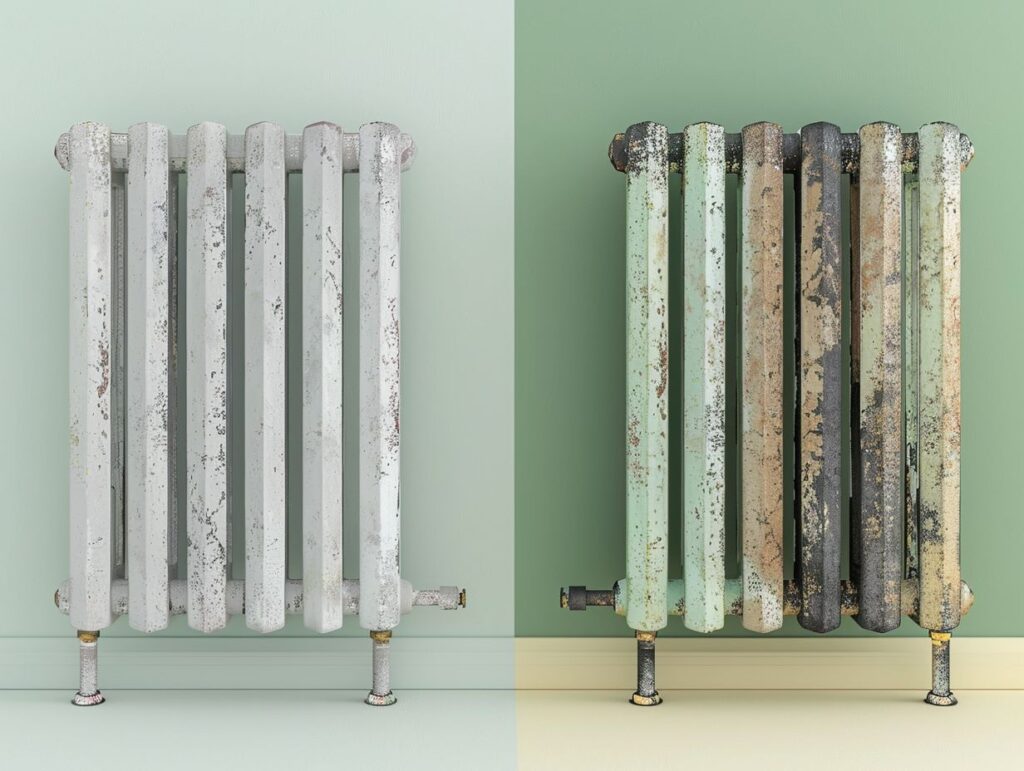If you are considering upgrading your heating system with a new radiator, you may be uncertain about which material to select. This comparison focuses on metallic and brass heating options, outlining the various types of each material and examining their respective benefits and drawbacks.
By evaluating factors like efficiency, cost, and maintenance, you will gain insights to make an informed decision on whether metallic or brass heating is the right choice for you. Let us delve into the details to help you with this important decision.
Key Takeaways:
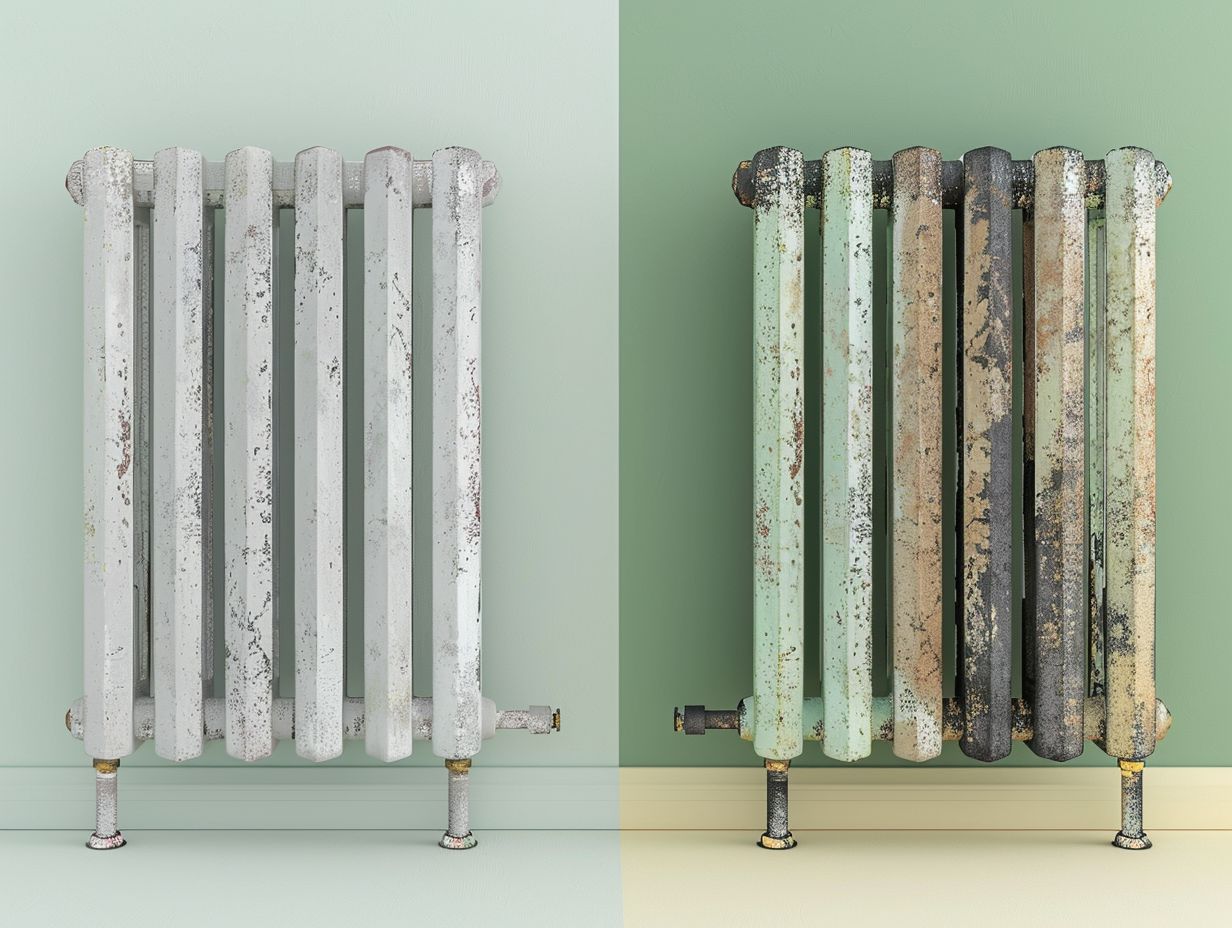
- Metallic heating is a popular and cost-effective option for radiators, offering a variety of types and benefits such as durability and quick heating. However, it can also have downsides such as being less energy efficient.
- Brass heating may be pricier than metallic heating, but it boasts a luxurious and classic look. It also has benefits such as energy efficiency and durability, but requires more maintenance to keep its shine.
- When choosing between metallic and brass heating, consider factors such as cost, efficiency, and aesthetic preferences. Both options can offer effective heating, so it ultimately depends on personal needs and preferences. Proper maintenance can also extend the lifespan of either type of radiator.
Metallic Heating
Metal heating systems utilise materials such as steel, aluminium, and cast iron in the construction of radiators to efficiently generate and distribute heat throughout a space.
These materials are selected for their durability and thermal conductivity, ensuring optimal efficiency in heating operations.
Steel, a common choice in radiator construction, offers high heat output and excellent corrosion resistance, making it a dependable option for long-term heating solutions. Aluminium, on the other hand, is lightweight yet robust, enabling quick heat transfer and energy efficiency.
Cast iron radiators, known for their classic appearance and exceptional heat retention capabilities, provide consistent warmth even after the heating system has been deactivated, contributing to overall energy savings and comfort in indoor environments.
Types of Metallic Heating
Metal heating systems consist of various types of radiators, including those made from mild steel and stainless steel. These radiators offer distinct advantages in terms of heat output, durability, and aesthetic design.
Mild steel radiators are recognised for their exceptional heat conductivity, ensuring efficient heat distribution throughout a space. They are also highly resilient, serving as a durable heating solution for residential settings.
Conversely, stainless steel radiators are valued for their contemporary and stylish appearance, enhancing the sophistication of any room. Both varieties of radiators are accompanied by warranties that offer consumers peace of mind, guaranteeing the quality and longevity of the product.
The corrosion resistance of stainless steel radiators makes them a preferred option in environments prone to moisture or humidity, ensuring they retain their visual appeal over time.
Benefits and Drawbacks
When considering metallic radiators, you are presented with a range of benefits including high efficiency, easy installation, diverse design options, and customisation opportunities for designers.
However, it is important to also take into account potential drawbacks such as running costs and environmental impact.
Efficiency is a primary advantage of metallic radiators, as they are recognised for their ability to efficiently and rapidly heat rooms. The installation process for these radiators is typically uncomplicated, saving time and effort for both homeowners and designers.
With a wide selection of design options to choose from, designers can easily discover a radiator that complements the aesthetic of any space. The customisation capabilities of metallic radiators allow for personalised details, creating distinctive and visually appealing heating elements.
Nevertheless, it is crucial to assess the running costs associated with these radiators, which can vary based on the model and usage. Environmental considerations are also important to take into consideration, as certain metallic radiators may consume more energy compared to other heating alternatives.
Brass Heating
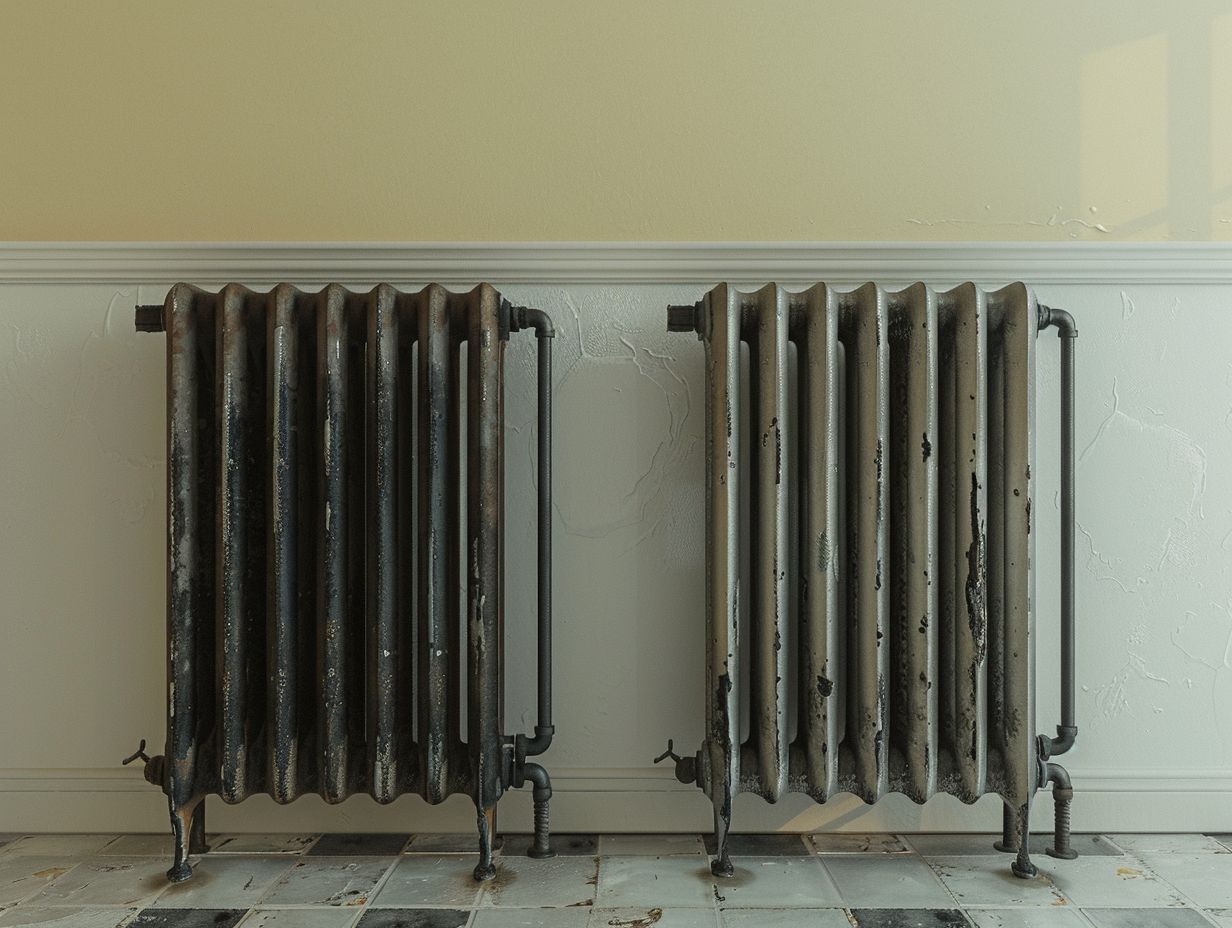
In brass heating systems, brass is the primary material used in radiator construction, providing exceptional heat conduction properties and efficient heat distribution. Brass radiators are renowned for their elegance and their ability to enhance the visual appeal of indoor spaces.
Not only do they add a stylish element to any room, but they also function as an effective means to establish a warm and inviting living environment. The warm golden tones of brass radiators introduce a sense of cosiness and sophistication to the decor, making them a favoured option among interior designers.
With its superior heat conduction capabilities, brass ensures that heat is evenly circulated throughout the room, resulting in a more consistent and comfortable temperature. This combination of functionality and aesthetic appeal makes brass radiators a seamless integration of practicality and design.
Types of Brass Heating
Brass heating systems encompass a variety of radiator designs that leverage the unique properties of brass to deliver optimal heat output and efficiency. These radiators are favoured for their classic look and exceptional thermal conductivity.
Their heat output capabilities vary depending on the specific design and size, with some models providing high levels of warmth suitable for larger rooms, while others offer more subtle heating for smaller spaces.
Brass radiators excel in efficiently distributing heat evenly throughout a room, ensuring a comfortable and consistent temperature. Along with their excellent thermal performance, brass radiators also stand out for their stylish appearance, adding a touch of elegance and sophistication to any interior decor.
Benefits and Drawbacks
You can reap various benefits from choosing brass radiators, such as improved efficiency, precise temperature regulation, compatibility with gas boilers, and the ability to adjust to different flow temperatures.
However, it is important to consider potential drawbacks, including higher initial costs and maintenance requirements.
The efficiency enhancements offered by brass radiators are particularly noteworthy. By reducing energy consumption and heating expenses, they can lead to significant cost savings. Additionally, the precise temperature control they provide ensures optimal comfort within your living space.
When integrated with gas boilers, brass radiators create a seamless heating system that effectively disperses warmth throughout the room. Their flexibility in adapting to various flow temperatures allows for customised settings tailored to your preferences and requirements, guaranteeing a consistently comfortable environment.
Comparison of Metallic and Brass Heating
When comparing metallic and brass heating systems, you need to assess their efficiency in heating operations, impact on overall heating systems, running costs over time, and environmental considerations. Each type of heating system has unique characteristics that cater to different needs and preferences.
Metallic heating systems, typically made from stainless steel or iron, are recognised for their durability and ability to provide consistent heating. While they excel at distributing heat effectively, they may not be as energy-efficient as brass systems.
In contrast, brass heating systems are lauded for their energy efficiency, making them a cost-effective option in the long run. When evaluating running costs, brass systems may have a higher initial investment but can result in savings over time due to their superior energy performance.
From an environmental perspective, brass heating systems are often regarded as more eco-friendly because of their efficiency in energy consumption.
Efficiency and Cost Comparison
When assessing the effectiveness and costs of metallic and brass heating systems, factors such as compatibility with heat pumps, design considerations, and overall heating efficiency are critical. Achieving cost-effective and energy-efficient heating solutions relies heavily on optimal system design and component selection.
Integrating heat pumps into a metal or brass heating system can significantly enhance its efficiency and lower operational costs. The design aspects of these systems, including insulation, piping layouts, and control mechanisms, are crucial in ensuring uniform heat distribution throughout the area.
It is essential to evaluate the overall heating efficiency of the system over time, as even minor enhancements in efficiency can result in significant savings in energy consumption and utility expenses.
Factors to Consider When Choosing
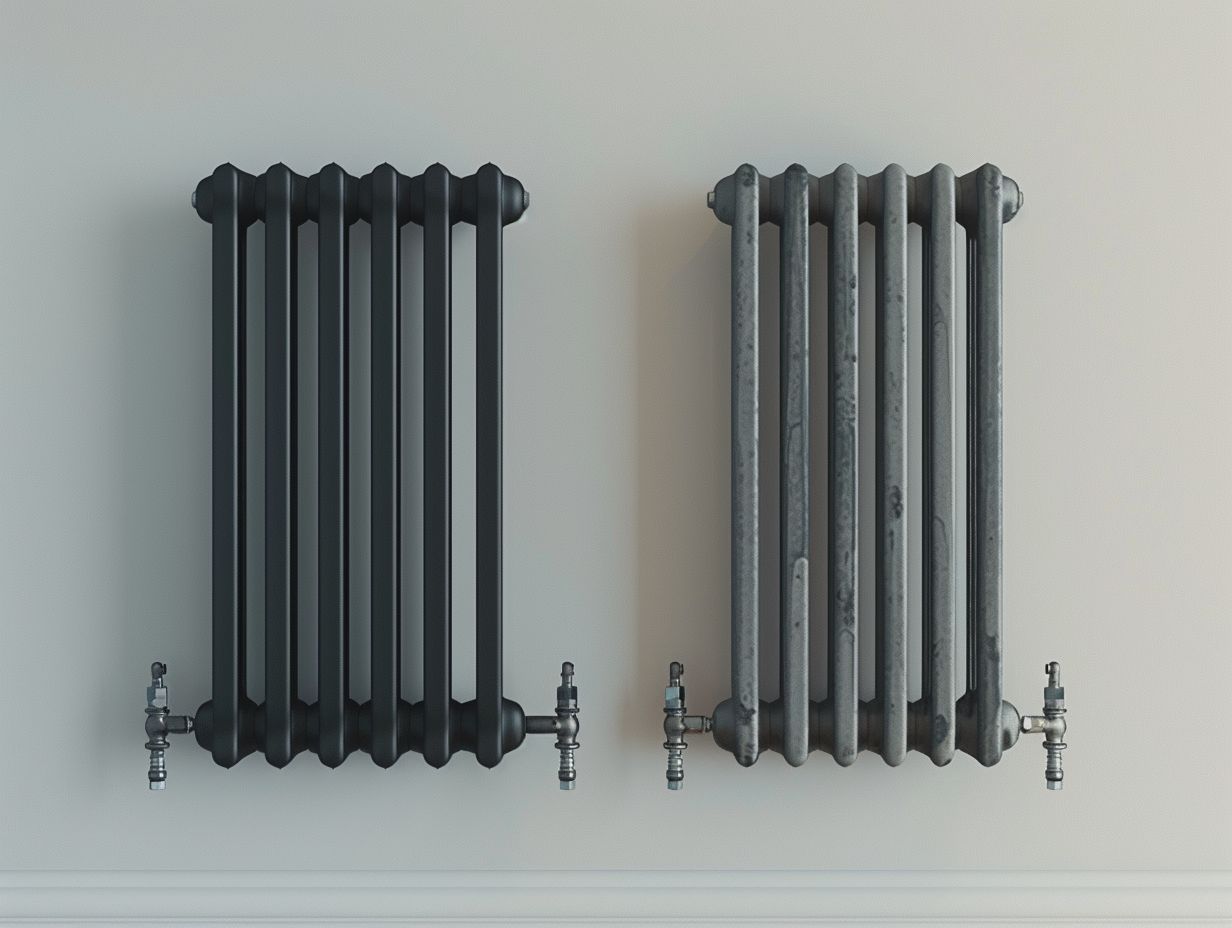
When you are faced with the decision between metallic and brass heating systems, it is crucial to carefully consider factors such as convection currents, heating convection mechanisms, and thermal conductivity properties.
Having a thorough understanding of how these elements influence heat distribution and energy efficiency is imperative in making a well-informed decision.
Convection currents play a pivotal role in the distribution of heat within a given space. They are responsible for facilitating the movement of warm air, ensuring that every corner of the area receives sufficient heating.
On the other hand, heating convection mechanisms aid in efficiently transferring heat from the heating system to the surrounding environment.
The thermal conductivity properties of the materials utilised in the heating systems dictate the speed at which heat can be transferred, thereby impacting the overall energy efficiency.
By carefully considering these factors, you can guarantee that the heating system you select effectively warms your space while optimising energy consumption.
Maintenance and Longevity
To ensure the maintenance and longevity of your radiators, it is crucial to adhere to warranty guidelines, implement proactive corrosion prevention measures, and conduct regular inspections for optimal performance.
Proper care and maintenance play a significant role in enhancing the lifespan and efficiency of heating systems.
By adhering to the manufacturer’s recommended warranty compliance, you can protect your investment in radiators from potential defects and malfunctions. This step is essential for ensuring that any issues that may arise are covered under the warranty agreement, thereby reducing the financial impact on the homeowner.
In addition, implementing proactive corrosion prevention strategies, such as utilising corrosion-resistant coatings or incorporating inhibitors into the system, is essential for prolonging the lifespan of radiators by shielding them from damage caused by rust and oxidation.
Conducting regular inspections is vital for identifying early signs of wear, leaks, or blockages, enabling timely repairs and maintenance to prevent these issues from escalating into more significant problems.
Tips for Maintaining and Extending Lifespan
To maintain and extend the lifespan of radiators, you must prioritise regular cleaning, proper installation, and selecting suitable designs that align with efficiency requirements.
It is crucial to consult with designers and thoroughly explore various options to optimise the performance and durability of your radiators.
By implementing these practices, you will not only enhance the aesthetics of your space but also experience improved functionality and energy efficiency. Proper installation of radiators is essential to mitigate any potential issues in the future.
Selecting designs that cater to your heating needs can enhance heat distribution and overall performance. Collaborating with designers can offer valuable insights into customisation options that can elevate the efficiency and visual appeal of your radiators. This ensures that your radiators remain in optimal condition for years to come.
Frequently Asked Questions
What is the difference between Metallic Heating and Brass Heating?
Metallic Heating and Brass Heating are two different types of heating systems used in radiators. Metallic Heating uses a combination of different metals, such as aluminum or steel, to produce heat, while Brass Heating uses brass as the main material for heat production.
Which one is more efficient?
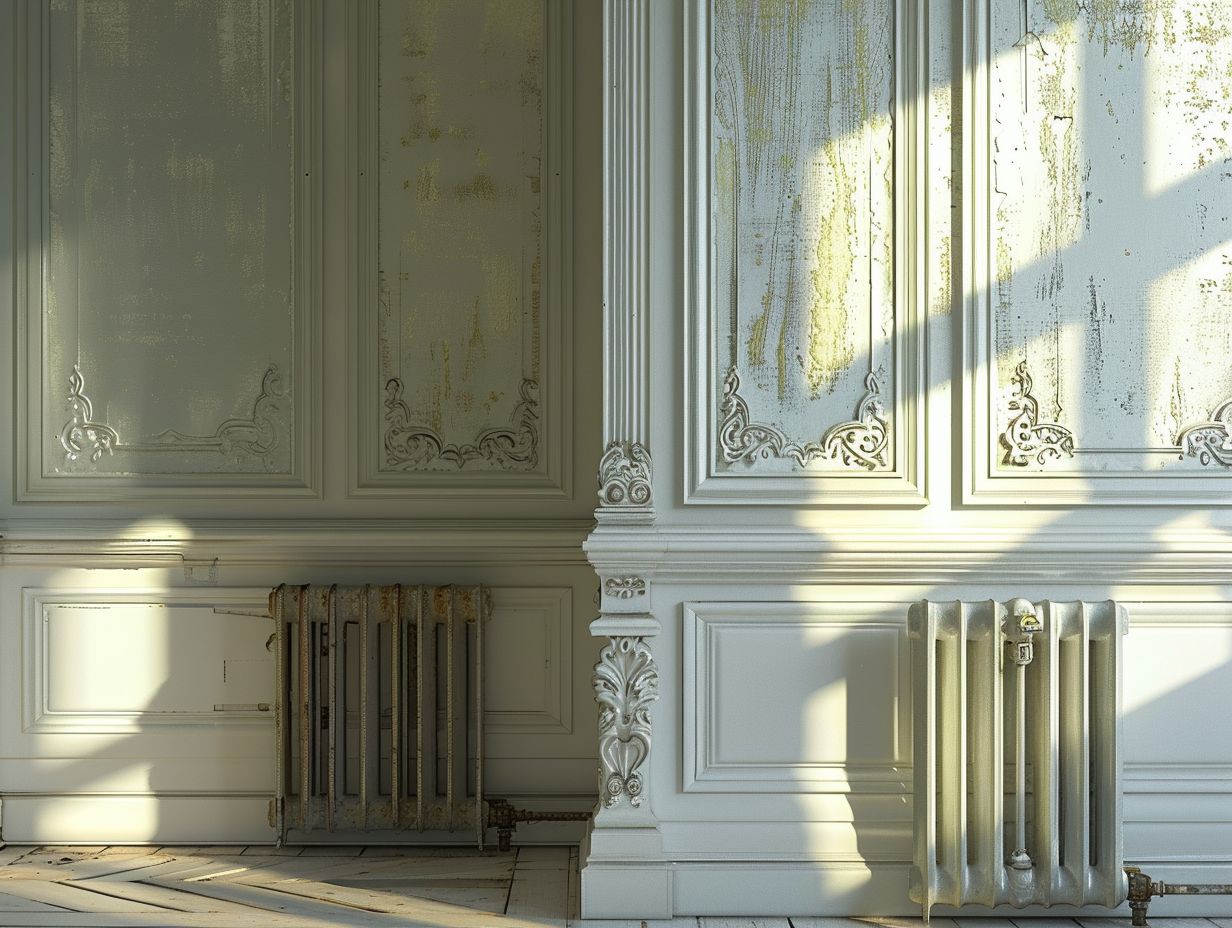
In terms of efficiency, Metallic Heating may be considered more efficient as it uses a combination of metals that can quickly transfer and distribute heat. However, Brass Heating can also be efficient as brass is a good conductor of heat.
What are the advantages of Metallic Heating?
Some advantages of Metallic Heating include its high heat output, quick warming time, and its ability to evenly distribute heat throughout the room. It is also durable and can withstand high pressure and temperature.
Are there any benefits to using Brass Heating?
Yes, Brass Heating has its own set of benefits. It is more aesthetically pleasing as brass has a shiny and elegant appearance. It also has a longer lifespan compared to other types of metallic heating systems.
Which one is more cost-effective?
It depends on various factors, such as the size of the room, the location, and the cost of materials. In general, Metallic Heating may be more cost-effective as it uses a combination of materials that can produce heat efficiently. However, the cost of Brass Heating may also vary depending on the quality and type of brass used.
Can both types of heating be used in any type of radiator?
Yes, both Metallic Heating and Brass Heating can be used in any type of radiator. However, it is important to consult a professional to ensure that the heating system is compatible with the specific type and size of the radiator.

